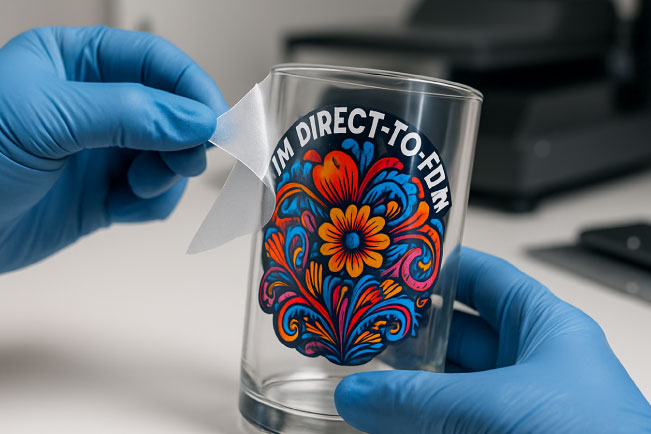UV Direct-to-Film (UV DTF) transfers are rapidly becoming one of the hottest printing technologies in the custom printing and product personalization industry. Known for their vibrant colors, long-lasting durability, and versatile application possibilities, UV DTF transfers are changing the way creators, crafters, and businesses approach custom design work.
But here’s the big question — which materials are most suitable for UV DTF transfers?
Not every surface or substrate works equally well with UV DTF printing. The key to achieving a flawless, professional finish lies in matching this technology with the right materials. Whether you’re customizing drinkware, creating decals, or branding promotional items, your material choice directly impacts the final product’s look, feel, and durability.
In this in-depth guide, we’ll break down:
- What UV DTF transfers are and how they work.
- The benefits of UV DTF over traditional printing methods.
- Which materials work best with UV DTF transfers.
- Tips for preparing and applying UV DTF prints for maximum longevity.
- Creative product ideas using UV DTF.
What Are UV Direct-to-Film Transfers?
UV DTF transfers use ultraviolet light to cure specially formulated inks printed on a transfer film, which is then applied to the target surface. This process combines UV printing technology with a pressure-sensitive adhesive layer, allowing full-color, high-resolution designs to be transferred directly to various materials — no heat press required.
Unlike traditional DTF for fabrics, UV DTF printing is designed for hard, smooth, and non-porous surfaces. The result is a raised, glossy, and scratch-resistant print that feels premium to the touch and offers incredible visual impact.
Benefits of UV DTF Transfers
Before we dive into material compatibility, it’s worth understanding why so many businesses are switching to UV DTF for product customization:
1. Wide Material Compatibility
From acrylic and glass to metals and plastics, UV DTF opens up endless possibilities for personalization.
2. No Heat Required
Since UV curing replaces heat pressing, you can work with heat-sensitive materials like thin plastics and coated papers without damage.
3. Vivid, Durable Prints
UV-cured inks create a durable surface that resists fading, scratching, and peeling.
4. Easy Application
With peel-and-stick simplicity, UV DTF is beginner-friendly but delivers professional-grade results.
5. Small-Batch Friendly
You can print as little as one custom decal or scale up for bulk orders — perfect for small businesses and Etsy sellers.
Best Materials for UV Direct-to-Film Transfers
While UV DTF can be applied to many surfaces, certain materials consistently produce the best results in terms of adhesion, color vibrancy, and durability. Below is a breakdown of the most suitable materials for UV DTF transfers, along with tips for each.
1. Glass
Why It Works:
Glass has a smooth, non-porous surface that pairs beautifully with UV DTF transfers. The adhesive backing bonds well, and the transparency of glass allows for creative effects like layering or back-side application.
Common Uses:
- Custom drinkware (coffee mugs, wine glasses, tumblers)
- Decorative glass panels
- Awards and trophies
- Candle jars
Pro Tip:
Clean the surface with isopropyl alcohol before applying the UV DTF decal to ensure maximum adhesion and prevent bubbling.
2. Acrylic
Why It Works:
Acrylic is lightweight, durable, and perfectly smooth — a dream for UV DTF printing. The adhesive grips firmly, and the glossy surface enhances the print’s depth and color vibrancy.
Common Uses:
- Custom signage
- Acrylic keychains
- Business branding plates
- Display stands
Pro Tip:
Avoid scratching the acrylic before application. Apply the UV DTF decal slowly, using a squeegee to eliminate air bubbles.
3. Stainless Steel
Why It Works:
Stainless steel’s non-porous, smooth texture allows UV DTF decals to bond exceptionally well. The strong adhesion means your design will withstand regular handling and washing.
Common Uses:
- Water bottles
- Stainless steel tumblers
- Lunchboxes
- Kitchen tools
Pro Tip:
Make sure the surface is dry and oil-free before application. Fingerprints or grease can weaken adhesion.
4. Ceramic
Why It Works:
Ceramic surfaces — glazed or unglazed — work perfectly with UV DTF transfers. The glossy glaze on mugs and tiles makes for a professional, high-definition print.
Common Uses:
- Coffee mugs
- Decorative ceramic tiles
- Plant pots
- Souvenirs
Pro Tip:
For drinkware, hand washing is recommended to maintain print quality over time.
5. Wood (Sealed or Painted)
Why It Works:
While raw, unfinished wood isn’t ideal, sealed or painted wood provides a smooth enough surface for UV DTF adhesion. The adhesive bonds well to the finish, not the grain.
Common Uses:
- Home décor signs
- Personalized coasters
- Jewelry boxes
- Gift items
Pro Tip:
Make sure the wood finish is fully cured and smooth before applying the transfer.
6. Plastics (ABS, PVC, Polycarbonate)
Why It Works:
UV DTF works extremely well with many types of plastics, especially those with a smooth or lightly textured finish. The pressure-sensitive adhesive creates a strong bond.
Common Uses:
- Phone cases
- Storage containers
- Promotional items
- Plastic signage
Pro Tip:
Avoid applying UV DTF decals to flexible plastics that bend significantly, as this may cause cracking over time.
7. Metal Surfaces (Coated or Painted)
Why It Works:
Metals with a powder-coated or painted finish provide excellent adhesion for UV DTF prints. The finish helps protect against oxidation while giving the adhesive a smooth bonding surface.
Common Uses:
- Business branding plates
- Promotional tin boxes
- Decorative plaques
- Custom metal art
Pro Tip:
For bare metals like aluminum, consider applying a clear coat first for better adhesion and a polished look.
8. Leather (Faux or Genuine, Smooth Finish)
Why It Works:
Smooth leather and faux leather items can take UV DTF decals beautifully, adding a personalized touch to everyday items.
Common Uses:
- Wallets
- Key fobs
- Notebook covers
- Bags and cases
Pro Tip:
Stick to flat leather surfaces — heavily textured or uneven leather may not allow the decal to adhere evenly.
Materials to Avoid for UV DTF Transfers
While UV DTF is versatile, some materials aren’t ideal for this technology:
- Fabric and Textiles: Use traditional DTF or screen printing for garments.
- Rough or Textured Wood: Adhesion is poor on uneven surfaces.
- Highly Flexible Surfaces: Excess bending can crack the UV-cured layer.
- Unfinished Porous Materials: Adhesive can sink into the pores and weaken bonding.
How to Prepare Surfaces for UV DTF Application
No matter the material, surface prep is the secret to flawless UV DTF results.
Follow these steps for best adhesion:
- Clean Thoroughly: Remove dust, oil, or fingerprints with isopropyl alcohol.
- Dry Completely: Ensure there’s no moisture before applying the transfer.
- Test Placement: Before peeling the backing, position the decal to check alignment.
- Apply Firm Pressure: Use a squeegee or credit card to press the decal firmly and remove bubbles.
- Peel Carefully: Remove the transfer film slowly at a sharp angle.
Creative Product Ideas for UV DTF Transfers
UV DTF printing allows for unlimited creativity. Here are some high-demand product ideas for your business:
- Personalized Drinkware: Mugs, tumblers, and bottles with vibrant, durable designs.
- Custom Business Signage: Acrylic desk nameplates and small shop signs.
- Unique Home Décor: Customized coasters, candle holders, and decorative tiles.
- Event Giveaways: Keychains, ornaments, and promotional merchandise.
- Special Occasion Gifts: Personalized items for weddings, birthdays, or corporate events.
Why Choose DTFSuperPrint for Your UV DTF Needs
At DTFSuperPrint.com, we specialize in high-quality UV DTF transfers that are easy to apply, stunning to look at, and built to last. Whether you need a small custom order or a large production run, our UV DTF printing process ensures premium results every time.
We offer:
- Top-grade adhesive films for maximum durability.
- Sharp, vibrant prints with rich colors.
- Fast turnaround times to keep your business running smoothly.
- Expert guidance on choosing the right materials for your projects.
When it comes to best materials for UV DTF, we know what works — and we help our customers get it right the first time.
Choosing the right material for UV DTF transfers is essential for creating products that not only look amazing but also last. Surfaces like glass, acrylic, stainless steel, ceramic, coated metals, and certain plastics are ideal for long-lasting, professional-quality results.
With the right preparation and application techniques, UV DTF transfers can transform ordinary items into eye-catching, custom-branded products. Whether you’re an Etsy seller, a small business, or a large-scale manufacturer, understanding which materials are most suitable for UV DTF transfers will save you time, money, and headaches — while wowing your customers.
If you’re ready to explore the best in custom UV DTF printing, DTFSuperPrint.com is here to bring your ideas to life with precision, quality, and creativity.

